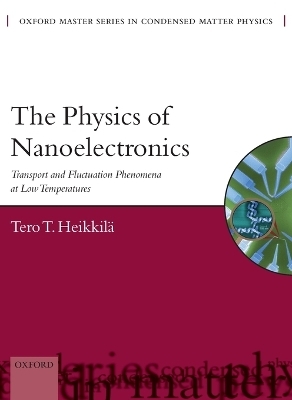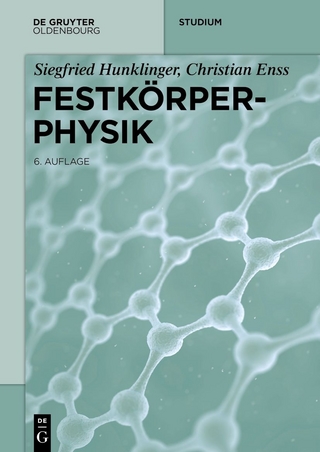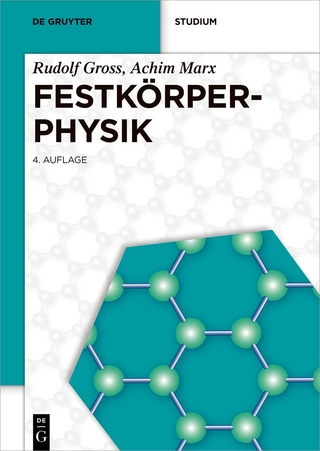
The Physics of Nanoelectronics
Transport and Fluctuation Phenomena at Low Temperatures
Seiten
2013
Oxford University Press (Verlag)
978-0-19-959244-9 (ISBN)
Oxford University Press (Verlag)
978-0-19-959244-9 (ISBN)
This book provides an introduction to phenomena and models in nanoelectronics. It starts from the basics, but also introduces topics of recent interest, such as superconducting qubits, graphene, and quantum nanoelectromechanics.
Advances in nanotechnology have allowed physicists and engineers to miniaturize electronic structures to the limit where finite-size related phenomena start to impact their properties. This book discusses such phenomena and models made for their description. The book starts from the semiclassical description of nonequilibrium effects, details the scattering theory used for quantum transport calculations, and explains the main interference effects. It also describes how to treat fluctuations and correlations, how interactions affect transport through small islands, and how superconductivity modifies these effects. The last two chapters describe new emerging fields related with graphene and nanoelectromechanics. The focus of the book is on the phenomena rather than formalism, but the book still explains in detail the main models constructed for these phenomena. It also introduces a number of electronic devices, including the single-electron transistor, the superconducting tunnel junction refrigerator, and the superconducting quantum bit.
Advances in nanotechnology have allowed physicists and engineers to miniaturize electronic structures to the limit where finite-size related phenomena start to impact their properties. This book discusses such phenomena and models made for their description. The book starts from the semiclassical description of nonequilibrium effects, details the scattering theory used for quantum transport calculations, and explains the main interference effects. It also describes how to treat fluctuations and correlations, how interactions affect transport through small islands, and how superconductivity modifies these effects. The last two chapters describe new emerging fields related with graphene and nanoelectromechanics. The focus of the book is on the phenomena rather than formalism, but the book still explains in detail the main models constructed for these phenomena. It also introduces a number of electronic devices, including the single-electron transistor, the superconducting tunnel junction refrigerator, and the superconducting quantum bit.
Tero Heikkilä is a grantee of the European Research Council
1. Introduction ; 2. Semiclassical theory ; 3. Scattering approach ; 4. Quantum interference effects ; 5. Introduction to superconductivity ; 6. Fluctuations and correlations ; 7. Single electron effects ; 8. Quantum dots ; 9. Tunnel junctions with superconductors ; 10. Graphene ; 11. Nanoelectromechanical systems ; Appendix A: Important technical tools ; Appendix B: Current operator for the scattering theory ; Appendix C: Fluctuation-dissipation theorem ; Appendix D: Derivation of the Boltzmann-Langevin noise formula ; Appendix E: Reflection coefficient in electronic circuits
| Erscheint lt. Verlag | 14.2.2013 |
|---|---|
| Reihe/Serie | Oxford Master Series in Physics ; 21 |
| Zusatzinfo | 194 b/w illustrations |
| Verlagsort | Oxford |
| Sprache | englisch |
| Maße | 196 x 248 mm |
| Gewicht | 808 g |
| Themenwelt | Naturwissenschaften ► Physik / Astronomie ► Festkörperphysik |
| Technik ► Maschinenbau | |
| ISBN-10 | 0-19-959244-6 / 0199592446 |
| ISBN-13 | 978-0-19-959244-9 / 9780199592449 |
| Zustand | Neuware |
| Haben Sie eine Frage zum Produkt? |
Mehr entdecken
aus dem Bereich
aus dem Bereich


